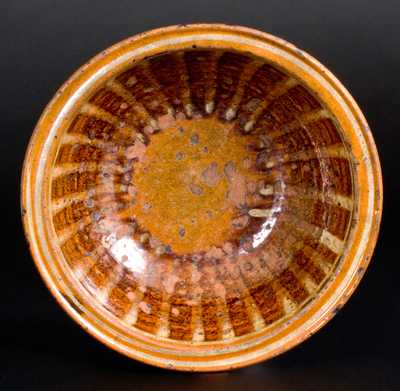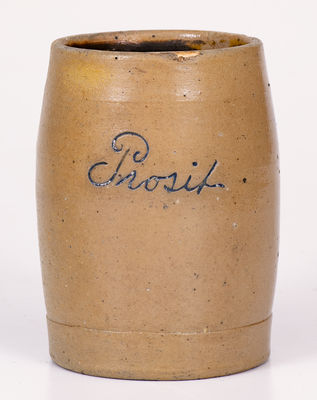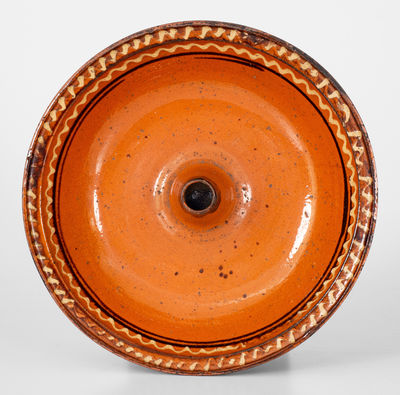Exceedingly Rare and Important Slip-Decorated Redware Dish, Stamped "J S," probably John Snavely, Hagerstown, MD or possibly Shepherdstown, WV origin, circa 1805-1820, with rounded walls and semi-rounded rim, the interior slip-cup-decorated with wavy trails of copper slip flanking five rows of "spiked" cream-colored slip under a clear lead glaze. Underside impressed with the extremely rare maker's stamp, "J S," surrounded by two incised circles. The distinctive decoration on this dish leads to a clear Hagerstown origin, corroborated by the region in which it was discovered roughly eighty-five years ago. Other pieces bearing related designs are frequently attributed to fellow Hagerstown potter, Henry Adam. Only two documented Hagerstown potters from the period have the initials, J.S., for their name: Jacob Smith and John Snavely. As noted by Shenandoah Valley pottery expert, H.E. Comstock, in his book, The Pottery of the Shenandoah Valley Region, Smith was apprenticed to Peter Bell between 1808 and 1818, and ceased working at the pottery at that time. No other record of his involvement in Hagerstown pottery production is discussed (Comstock, pg. 469). The second potter, John Snavely, was active in both Hagerstown and Shepherdstown between 1805 and 1820. Snavely's Hagerstown pottery was located on Beaver Creek and it is believed he sporadically worked at his Shepherdstown site. In 1813, Snavely, along with Henry Adam, Peter Bell, and Daniel Reichard, formed an association to regulate the prices of Hagerstown earthenware. He would eventually move to Ohio in the 1820s (Comstock, pp. 469-470). Snavely's deep involvement in regional pottery production and ownership of two kiln sites strongly suggests that the initials on the dish's underside identifies him as its maker. The dish is a fine example of Hagerstown redware from a purely decorative perspective. However, its impressed stamp elevates this work to a level of great significance to the history of Shenandoah Valley regional pottery and Southern ceramics as a whole. It is possibly the earliest example of intact Shenandoah pottery bearing an impressed maker's mark. Provenance: From an eighty-plus year private collection. A 10 1/2" sealed crack from rim, much of which is very tight. Some small areas of wear to slip. Some knife marks and minor wear to interior. Diam. 11 5/8".















